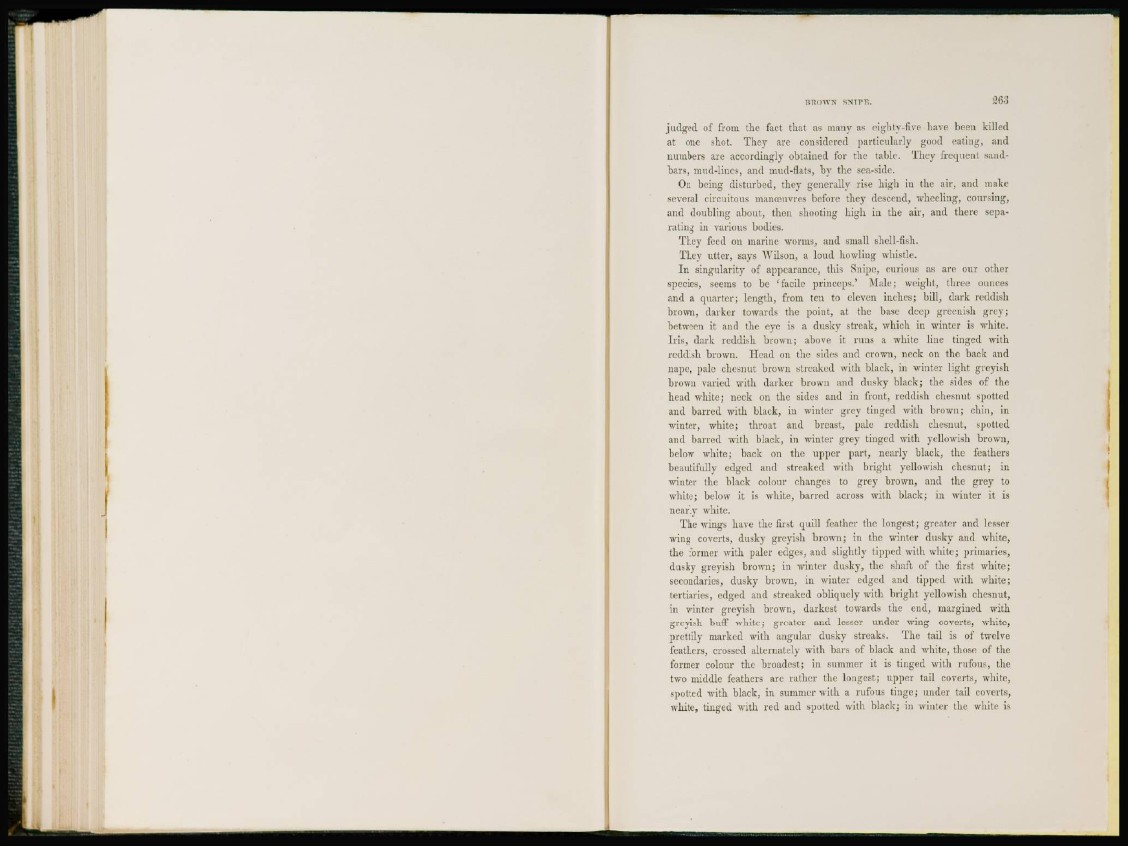
judged of from the fact that as many as eighty-five have been "killed
at one shot. They are considered particularly good eating, and
numbers are accordingly obtained for the table. They frequent sandbars,
mud-lines, and mud-flats, by the sea-side.
On being disturbed, they generally rise high in the air, and make
several circuitous manoeuvres before they descend, wheeling, coursing,
and doubling about, then shooting high in the air, and there separating
in various bodies.
They feed on marine worms, and small shell-fish.
They utter, says "Wilson, a loud howling whistle.
I n singularity of appearance, this Snipe, curious as are our other
species, seems to be 'facile princeps.' Male; weight, three ounces
and a quarter; length, from ten to eleven inches; bill, dark reddish
brown, darker towards the point, at the base deep greenish grey;
between it and the eye is a dusky streak, which in winter is white.
Iris, dark reddish brown; above it runs a white line tinged with
reddish brown. Head on the sides and crown, neck on the back and
nape, pale chesnut brown streaked with black, in winter light greyish
brown varied with darker brown and dusky black; the sides of the
head white; neck on the sides and in front, reddish chesnut spotted
and barred with black, in winter grey tinged with brown; chin, in
winter, white; throat and breast, pale reddish chesnut, spotted
and barred with black, in winter grey tinged with yellowish brown,
below white; back on the upper part, nearly black, the feathers
beautifully edged and streaked with bright yellowish chesnut; in
winter the black colour changes to grey brown, and the grey to
white; below it is white, barred across with black; in winter it is
nearly white.
The wings have the first quill feather the longest; greater and lesser
wing coverts, dusky greyish brown; in the winter dusky and white,
the former with paler edges, and slightly tipped with white; primaries,
dusky greyish brown; in winter dusky, the shaft of the first white;
secondaries, dusky brown, in winter edged and tipped with white;
tertiaries, edged and streaked obliquely with bright yellowish chesnut,
in winter greyish brown, darkest towards the end, margined with
greyish buff white; greater and lesser under wing coverts, white,
prettily marked with angular dusky streaks. The tail is of twelve
feathers, crossed alternately with bars of black and white, those of the
former colour the broadest; in summer it is tinged with rufous, the
two middle feathers are rather the longest; upper tail coverts, white,
spotted with black, in summer with a rufous tinge; under tail coverts,
white, tinged with red and spotted with black; in winter the white is